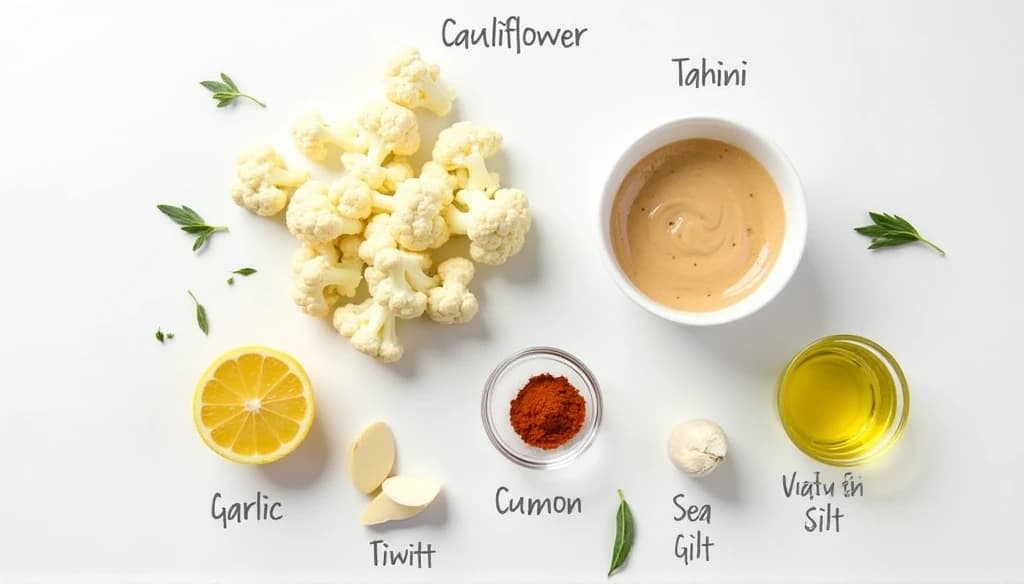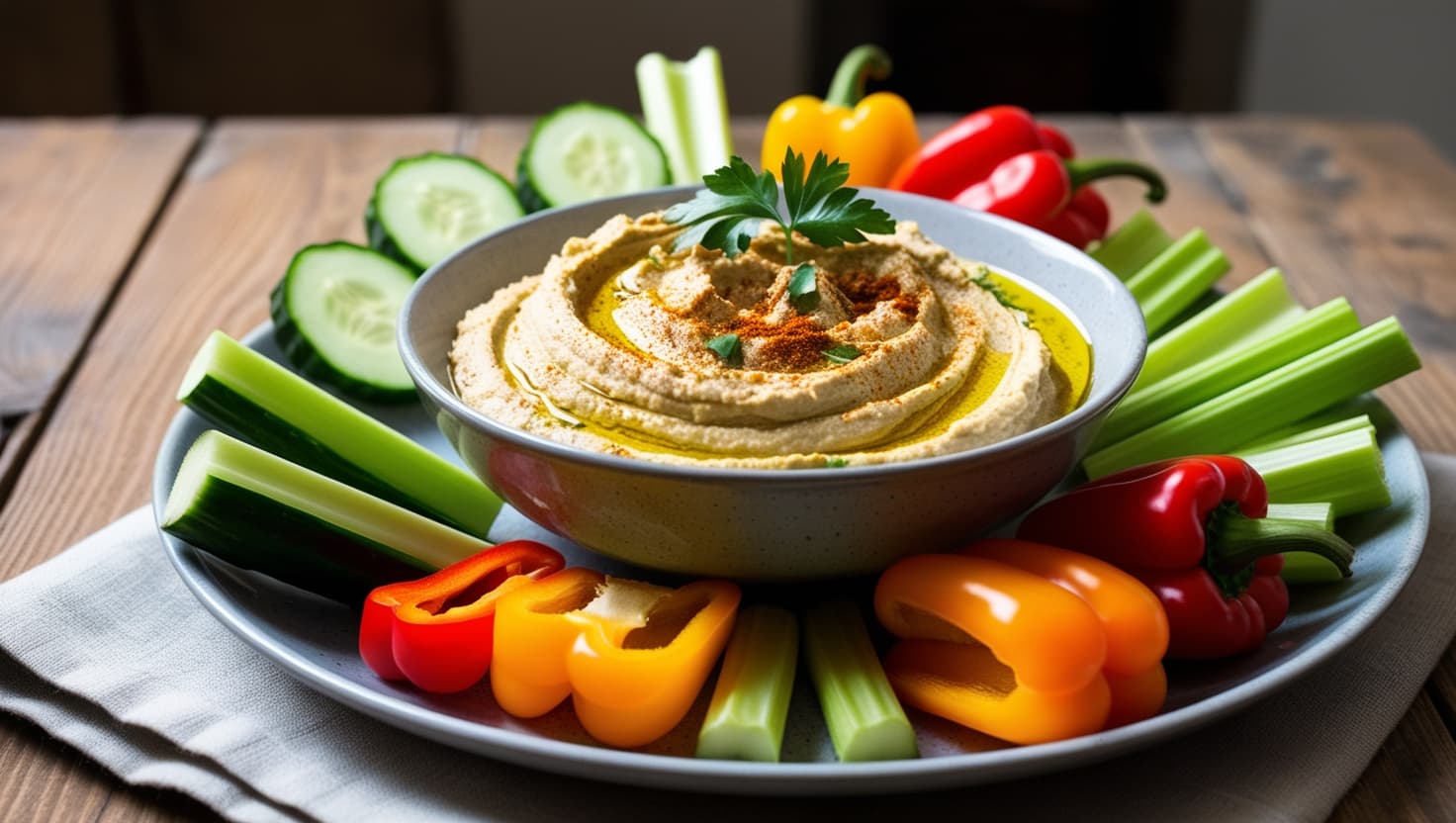Table of Contents
ToggleAre you a hummus lover, but trying to stick to a keto-friendly diet? Look no further! This delicious keto hummus recipe is a low-carb, high-fat alternative to the traditional chickpea-based version. Whether you’re craving a creamy dip for your veggies, a spread for keto-friendly wraps, or simply a flavorful snack, this keto hummus fits the bill perfectly. Packed with healthy fats and rich flavors, it’s the perfect addition to your keto meal plan without sacrificing taste. Let’s dive into the details of this creamy, nutty, and satisfying recipe!
Why You’ll Love this Keto Hummus
Traditional hummus is made with chickpeas, which are relatively high in carbs. But this version swaps out chickpeas for a keto-friendly substitute: cauliflower! Yes, cauliflower is the star of this keto hummus recipe, giving it a creamy texture while keeping the carbohydrate count low. You’ll still get the traditional flavors from tahini, garlic, and lemon juice, but without the carb overload. Plus, this hummus is loaded with healthy fats thanks to olive oil and tahini, making it the perfect dip or spread for those on a ketogenic diet.
Tools You’ll Need
Before diving into the ingredients, it’s essential to have the right tools on hand to ensure a smooth and quick preparation process.
- Food Processor: This will help you achieve that silky-smooth hummus texture.
- Steamer or Pot with a Steaming Basket: For cooking the cauliflower.
- Measuring Cups and Spoons: Accuracy is key in keto recipes, especially when calculating macros.
- Spatula: To scrape down the sides of the food processor and ensure everything gets blended evenly.
- Serving Bowl: For presenting your hummus.
Ingredients for Keto Hummus

Here’s everything you’ll need to make this creamy keto hummus. These ingredients are easy to find and packed with flavor, while keeping the carb count low.
- 1 medium head of cauliflower (about 4-5 cups of florets)
- ¼ cup of tahini (sesame seed paste, a must for that traditional hummus flavor)
- ⅓ cup of extra virgin olive oil (for richness and added healthy fats)
- 2 cloves of garlic (raw or roasted, depending on your preference)
- Juice of 1 large lemon (about 2-3 tablespoons of fresh lemon juice)
- ½ teaspoon sea salt (adjust to taste)
- ¼ teaspoon ground cumin (optional, for extra warmth and depth)
- ¼ teaspoon paprika (for garnish)
- 2 tablespoons water (optional, to adjust consistency)
Optional add-ins for extra flavor:
- Pinch of chili flakes (for a spicy kick)
- Fresh herbs, such as parsley or cilantro (for garnish)
Step-by-Step Preparation of Keto Hummus
Let’s walk through the process of making this keto hummus. Each step is designed to maximize flavor and texture, ensuring that your hummus turns out creamy, smooth, and delicious.
Step 1: Prepare the Cauliflower

Begin by washing and cutting the cauliflower into small florets. The smaller the florets, the quicker they will cook, and the smoother your hummus will be.
Next, set up your steamer. If you don’t have a dedicated steamer, simply fill a pot with about an inch of water and place a steaming basket inside. Bring the water to a boil, and once it’s hot and steaming, add the cauliflower florets. Cover the pot with a lid.
Steam the cauliflower for 10-12 minutes, or until it becomes tender. You’ll know it’s ready when you can easily pierce a floret with a fork. Be careful not to overcook the cauliflower, as you don’t want it to become mushy. It should be soft but retain its shape.
Once the cauliflower is tender, remove it from the heat and let it cool for a few minutes. Allowing it to cool slightly ensures that your hummus doesn’t end up too watery.
Step 2: Blend the Ingredients
Now it’s time to bring all the ingredients together. In your food processor, add the steamed cauliflower florets, tahini, garlic, lemon juice, olive oil, and sea salt. If you’re using cumin for a deeper flavor, this is the moment to add it in as well.
Start the food processor on a low setting, gradually increasing the speed as the ingredients begin to blend together. Blend for about 1-2 minutes, stopping to scrape down the sides of the bowl occasionally.
If the mixture seems too thick, add 1-2 tablespoons of water to thin it out. Be careful not to add too much water at once, as you want your hummus to remain creamy and not runny. Continue blending until the hummus reaches your desired consistency—smooth, creamy, and velvety.
Step 3: Adjust Seasoning and Consistency

Taste the hummus and adjust the seasoning as needed. If you prefer more tang, add a little extra lemon juice. For a richer flavor, drizzle in a bit more olive oil or sprinkle in more sea salt. You can also add a pinch of cumin or chili flakes to enhance the flavors.
If the hummus is too thick, add a little more water, one tablespoon at a time, until you reach the desired consistency. Remember, the hummus will thicken slightly as it sits, so don’t be afraid to thin it out a bit if necessary.
Step 4: Serve and Garnish
Once your keto hummus is blended to perfection, transfer it to a serving bowl. Use the back of a spoon to create a little swirl pattern on the surface, which will hold your garnishes.
Drizzle a little extra virgin olive oil on top for added richness, then sprinkle with ground paprika for a pop of color. If you like, you can also garnish with fresh herbs, like parsley or cilantro, or add a few chili flakes for heat.
Step 5: Enjoy!

Your keto hummus is now ready to serve! This versatile dish can be enjoyed in several ways:
- Serve it as a dip for low-carb veggies such as cucumber slices, celery, or bell pepper strips.
- Use it as a spread in keto-friendly wraps or sandwiches.
- Pair it with almond flour crackers for a crunchy, satisfying snack.
Nutritional Information (Per Serving)
Here’s the approximate nutritional breakdown for one serving (based on 4 servings total):
- Calories: 200 kcal
- Fat: 18g
- Protein: 3g
- Total Carbs: 6g
- Fiber: 2g
- Net Carbs: 4g
Notes and Tips for Success

- Roast the Garlic for Extra Depth: If you want to add a little more complexity to your hummus, try roasting the garlic before adding it to the food processor. Roasting garlic mellows its flavor and adds a subtle sweetness that pairs beautifully with the creamy hummus.
- Adjust the Tahini and Olive Oil: Tahini and olive oil are high in fat, making them perfect for the keto diet. However, the amount you use can be adjusted to your taste. If you prefer a richer, nuttier flavor, don’t hesitate to add more tahini or olive oil.
- Make it Spicy: If you enjoy a bit of heat, add a pinch of cayenne pepper or chili flakes to the food processor for a spicy twist. You can also garnish with extra chili flakes for a visually appealing touch.
- Storage: Store your keto hummus in an airtight container in the refrigerator for up to 5 days. It’s a great make-ahead snack that you can enjoy throughout the week.
- Serving Ideas: This keto hummus is so versatile! Use it as a snack, a light lunch, or a side dish for dinner. It’s also a fantastic addition to charcuterie boards or keto-friendly mezze platters.
Conclusion
This keto hummus recipe is a game-changer for anyone on a low-carb diet who misses the creamy goodness of traditional hummus. By using cauliflower as the base, this dish keeps the carbs low while still delivering the rich, savory flavors you love. Packed with healthy fats from tahini and olive oil, this keto hummus is not only delicious but also satisfying and perfect for maintaining ketosis.
Whether you’re enjoying it as a snack, lunch, or dinner side, this keto hummus is sure to become a staple in your meal rotation. Plus, with minimal prep time and easy-to-find ingredients, it’s a convenient and nutritious option for busy keto dieters.
So, next time you’re craving something creamy, savory, and keto-friendly, give this cauliflower-based hummus recipe a try. Your tastebuds—and your macros—will thank you!





